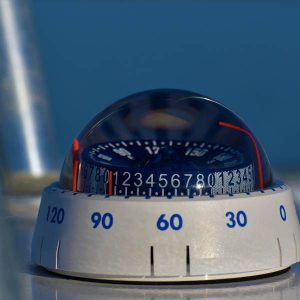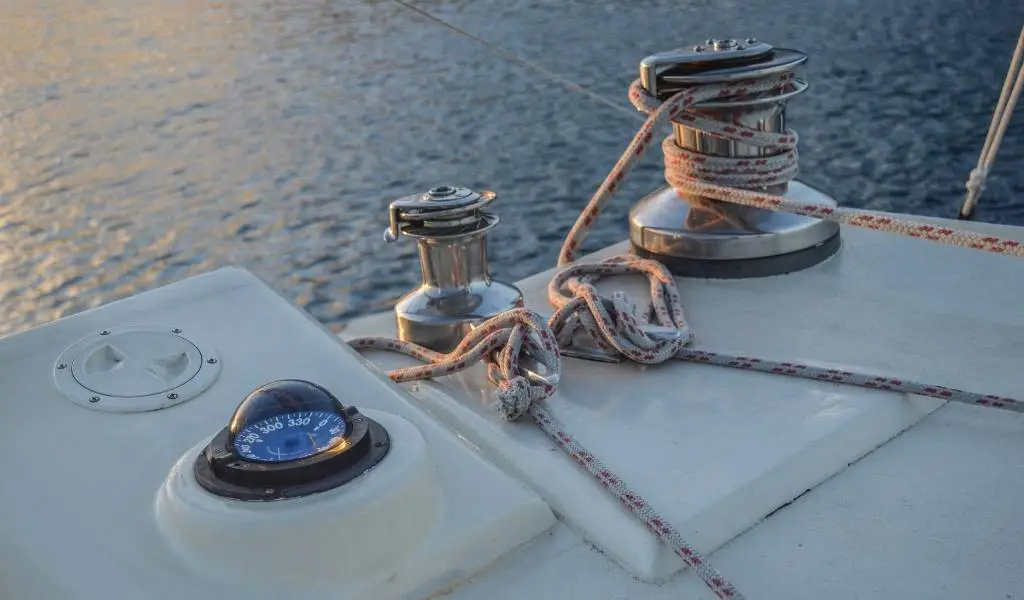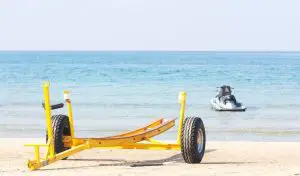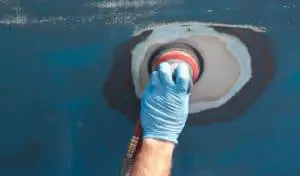In spite of the technological breakthrough, some instruments and tools have managed to stand the test of time because they’re simple yet reliable. A compass is one of them.
Having a compass on your boat is a must, even if you have lots of electronics that are meant to help you navigate your boat. However, you need to make sure that you’ve mounted it correctly and you’re using it right. If you want to avoid getting lost with your family, check out my article on navigation.
In this article, we’ll explain where should a boat compass be mounted, tell you about things that can guarantee the accuracy of your readings, in addition to tips that will help you navigate successfully.
What is a Boat Compass?

This is a device that will help you follow marine charts, so you can find land when you want to. There are three types of compasses that you can use on a boat, these are magnetic, GPS, or Fluxgate compasses.
Magnetic Compass
This is a simple tool that has a needle or pointer that points to the Magnetic North.
Considering purchasing a magnetic compass for your boat? Here are my suggestions.
Good: Dash Mount Flush – Boating Compass
Better: Flush Mount Compass, Black (F-50)
Best: Ritchie Flush Mount Compass
GPS Compass
This depends on information obtained from satellites to pinpoint your exact location. It will help you find True North. It uses two GPS antennas which are positioned a short distance apart and will then use this to calculate the direction.
It’s similar to the compass found in a smartphone, only much more accurate. They can also show a range of other data such as speed, exact position, and rate of turn. However, they can be prone to losing signal in extreme weather or if not positioned correctly.
Fluxgate Compass
This operates by electricity that passes through coils wrapped around the core of a permeable magnetic to determine direction.
Magnetic compasses are the most common and also the safest to use. When you’re boating, you have absolutely no control over the weather and external factors that can affect your electronics. You need a simple tool that works on its own, in case there are obstacles that block satellite waves or problems with generating electricity.
There are three shapes of magnetic compasses; flat, conical, and cylindrical. Flat compasses are suitable for bigger boats that sail in rough conditions. They can be placed in binnacles; containers that are used to keep the compass and its components.
A binnacle is usually made of wood or any other material that won’t affect the accuracy of the compass. It allows for easy access when the sea gets rough.
Conical and cylindrical compasses are more suitable for smaller boats. They are suitable for boaters who sit at the helm or the steering part and prefer to look down at the compass.
Where Should a Boat Compass Be Mounted?
A lot of boating enthusiasts get confused about the best place to mount a compass. As a result, they tend to get faulty readings that drive them off the right course.
To make sure that your compass is accurate, you must choose the right spot for it. You should also mount it right.
The best place is to mount the compass at the front of the boat, right in front of the helmsman. Here are some tips to help you mount it properly.
- Make sure that the magnetic compass is away from all iron objects. These might prompt the compass to give wrong readings.
- Magnetic compasses can also be affected by electronics. These have an electric magnetic field that messes up with your compass readings.
- It should be away from electric wires.
- The compass shouldn’t be mounted next to any magnetic objects.
How to Mount a Boat Compass?
Flush-mounting on the helm or the dashboard is probably the best way to guarantee the accuracy of your compass. It takes less space and guarantees that your compass will stay safe as you sail your boat. You should make sure that you’ve used stainless steel or bronze washers and screws to secure it.
Bracket mounting means that you can install the compass anywhere you like. Overhead mounting means is where the compass hangs from the ceiling at eye level.
If you’re mounting the compass yourself, you might choose bracket mounting because it’s the easiest way to do it. Flush mounting is more accurate, however, it will be very difficult to adjust and fix the compass if something goes wrong. Overhead mounting is the way to go if you have a bigger boat with a steering hut but it’s not suitable for smaller boats. Here’s how to choose the right spot.
- Make sure that the compass is as close to the center of the boat as possible. In case of any deviations, they will be symmetrical. The rubber line should be parallel with the keel along the centerline of the boat to get the most accurate readings.
- Easy access should be provided; otherwise, the compass will become extremely difficult to use. You should be able to read it from the helm, without affecting your ability to see other boats and vessels right in front of you.
- Take the compass while heading North and move it along the dash area. If it moves direction without you moving the steering wheel, then this spot isn’t correct.
- Sail in the direction of a landmark and follow the course on a marine chart. Compare the direction on the compass on the one on your chart.
How Does a Boat Compass Work?
A magnetic compass has small magnets attached to the compass card. This card has a scale that sits on a bearing that moves as the direction changes.
The compass is filled with liquid air that allows the card to move freely to read directions using the needle or the lubber line.This line points to directions while the card has signs for North, South, East, and West.
Although understanding how a compass works seems quite straightforward, the truth is that it’s not. Before you get to use a boat compass, you should understand the difference between Magnetic North, True North, and Grid North.
Magnetic North is where the compass would normally point. It points to the North Pole but the direction shifts over time.
True North and Grid North are quite close to each other. Grid North is the central vertical line on the map, while True North is the end of the axis of the Earth. Both of them can be used for accurate navigation.
The difference between True North and Magnetic North is called magnetic declination and is measured by an angle to the west or east, and it differs from one place to another. You can turn the ring to the right or left to make your compass point to True North.
Is My Compass Accurate?
This is the most important question to ask yourself before leaving the marina. Your life and the lives of others depend on it.
A compass will help you navigate your boat safely with reduced visibility in case of a storm or fog. However, you must make sure that your compass isn’t broken or misaligned for maximum safety.
- If you see air bubbles inside the compass then it’s probably not working properly. In this case, the safest action is to have it replaced as soon as possible, and before your next boating adventure.
- You can compare your compass to a GPS. In this case, the GPS should be set to True North.
- Take your boat to the water and keep an eye on a chart with markers for some famous spots. These will help you determine the route to and from this destination. Compare the line on the chart to your compass reading to see if it’s off.
- Compare your compass to a new one at the store.
Most compasses can last for decades if you install and maintain them properly. However, it’s a good idea to have your compass aligned and calibrated every now and then.
How to Calibrate the Compass?
Calibrating or swinging the compass is done with the help of corrector magnets. These will fix the deviation and restore accuracy.
Over time, the compass might deviate from the accurate direction if it’s not perfectly mounted in the center or if you leave some electronic devices nearby. Professional compass swingers take the boat for a ride and compare the directional line to an accurate compass, thus creating a deviation card.
After that, the correct magnets are placed around the compass to minimize or eliminate the deviation. This process is not suitable for newbies, so it’s recommended that you hire a professional to do it.
What is the Difference between the GPS and the Compass?
GPS devices are extremely reliable electronic tools but they might not be the best ones to use while navigating. First of all, extreme weather conditions can affect the accuracy of your GPS device, thus driving you away from land, instead of towards it.
Solar storms and radio interference will also mess up with your GPS readings. In some cases, you might be out of coverage area or the satellite will be down for maintenance. During these periods, you’ll be off the grid, which can be extremely dangerous.
Your GPS will tell you the direction when you’re moving. It can’t tell you different directions you’re pointing at, unlike a compass that you can use to find the way to any point on the map.
GPS devices need to be powered. If you run out of power for any reason, you’ll be on your own. For all these reasons, it’s better to depend on an old-school compass that needs simple calibration and maintenance to get ready. It won’t fail you when technology can’t live up to your expectations.
Wrap Up
Every boat needs a magnetic compass. When installed properly, a magnetic compass will give the most reliable and accurate results in all sailing conditions.
Make sure that your compass is properly calibrated and mounted before you take your boat on a ride. You’ll enjoy your peace of mind and reach your destination safely.




